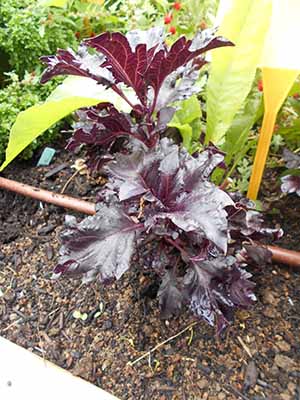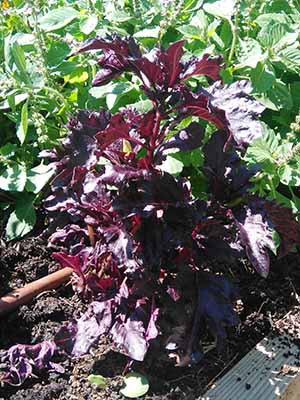Ocimum basilicum var. Purple Ruffles



| ENG | basil |
| SK | bazalka pravá |
| CZ | bazalka pravá |
| PL | bazylia pospolita |
| HU | bazsalikom |
Using
Traditionally it is used in folk medicine as a remedy for a large number of diseases, including cancer, convulsion, diarrhoea, epilepsy, gout, nausea, sore throat, toothaches, and bronchitis. Basil contains high levels of phenolic acids that contribute to its strong antioxidant capacity. Phenolic acids – such as rosmarinic, chicoric, caffeic, and caftaric acids – are found in high concentrations in numerous basil cultivars. According to study of European Journal of Clinical Nutrition, the dried sweet basil belongs between the 100 richest foods in polyphenols and antioxidants and it is on 26Th position in the frame of this chart. Antioxidant properties of basil are in high rate connected with essential oils. Ocimum basilicum L. is the most important species being utilized as a source of essential oil. Due to its pleasant aroma and antimicrobial activity, basil essential oil is a major aromatic agent with applications in various industries such as the food, pharmaceutical, cosmetic, and aromatherapy industries.
| I. | II. | III. | IV. | V. | VI. | VII. | VIII. | IX. | X. | XI. | XII. | |||||||||||||
| Sowing | ||||||||||||||||||||||||
| Planting | ||||||||||||||||||||||||
| Harvest | ||||||||||||||||||||||||
Botanical description and occurrence:
Ornamental annual plant with 45 cm height and 45 – 60 spread. Habit of the plant is mounding with lavender – pink flower. Foliage is deep - purple with a ruffled edge. Small percentage of plants is green.
Why to have the plant in your garden:
An ornamental plant with large, purple-black ruffled leaves makes attractive garnishes. Because of ruffled and fringed leaves, and spikes of large and showy, pinkish-purple flowers it is also great in containers or garden beds as an ornamental. The colourful leaves are full of flavour, strongly aromatic when crushed. Leaves and flowers can add colour and flavour pesto, dressings, hearty soup, vinegars, and oils. In the flavour it can be felt liquorice and cinnamon, not as strong as other purples.
Text:
Dr. Ivana Mezeyová, SUA, Nitra, Slovak Republic
Photo:
Dr. Ivana Mezeyová, SUA, Nitra, Slovak Republic

